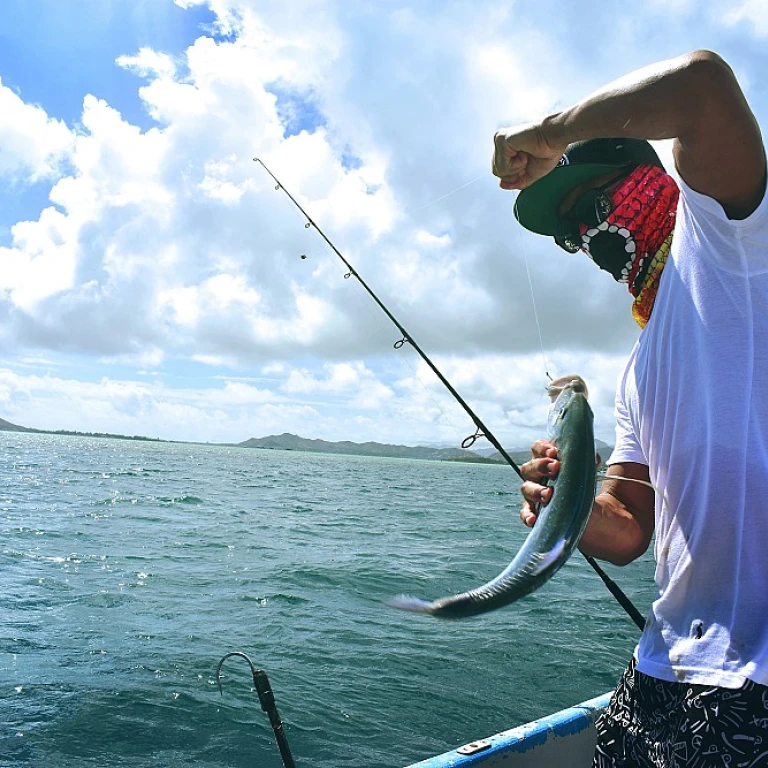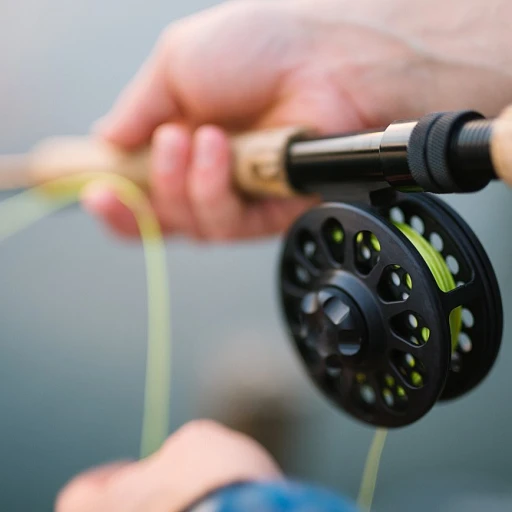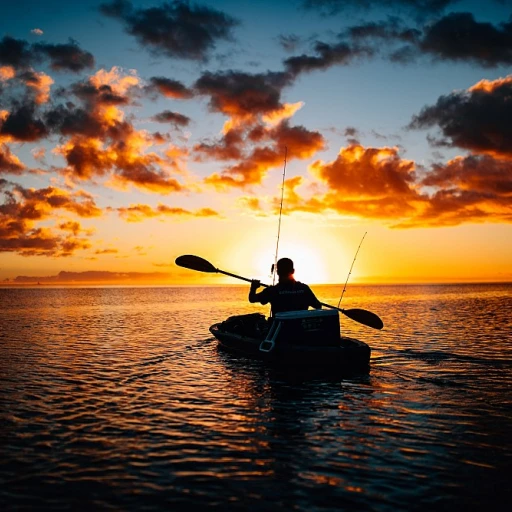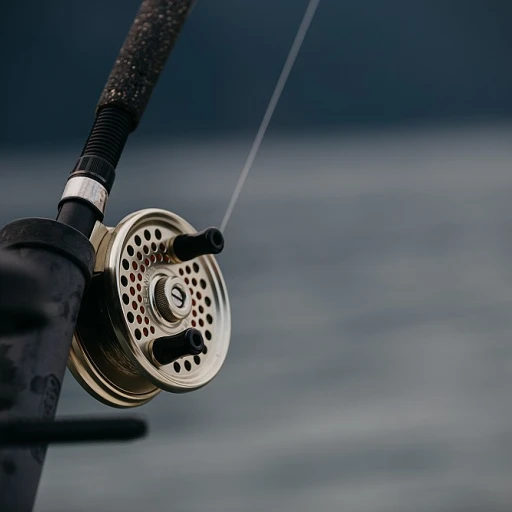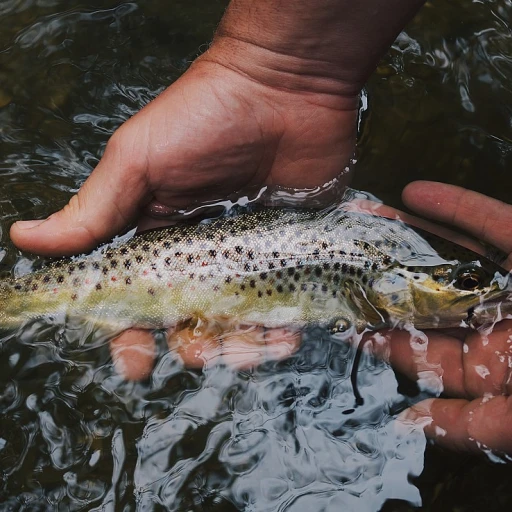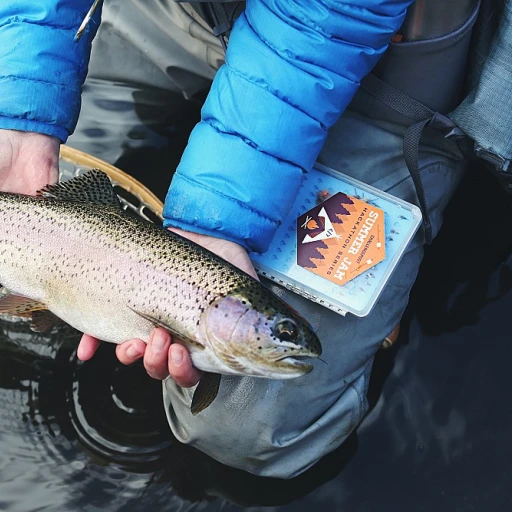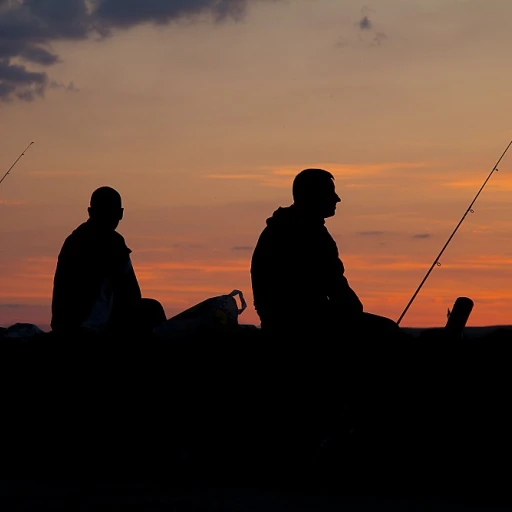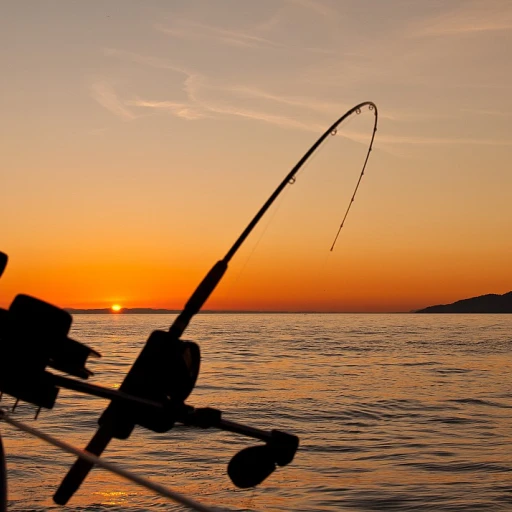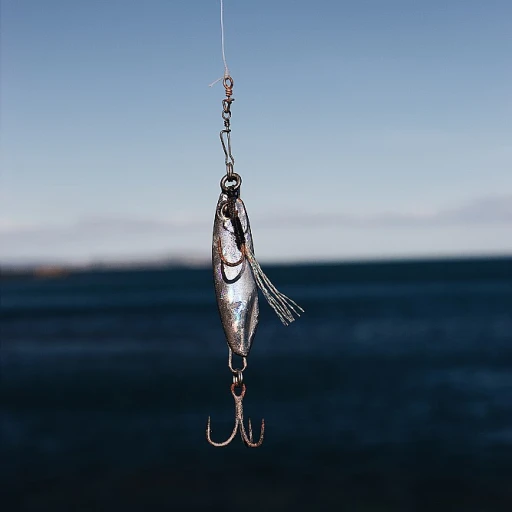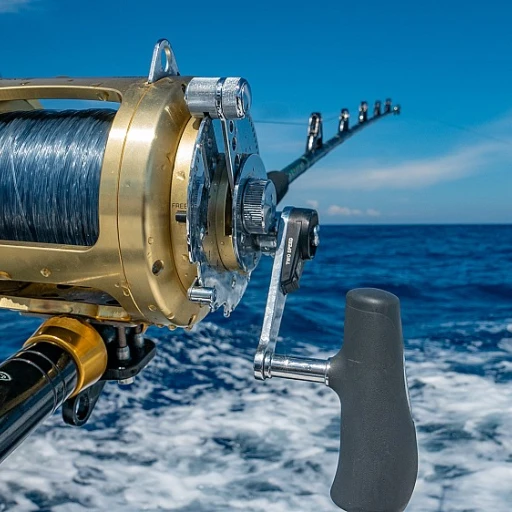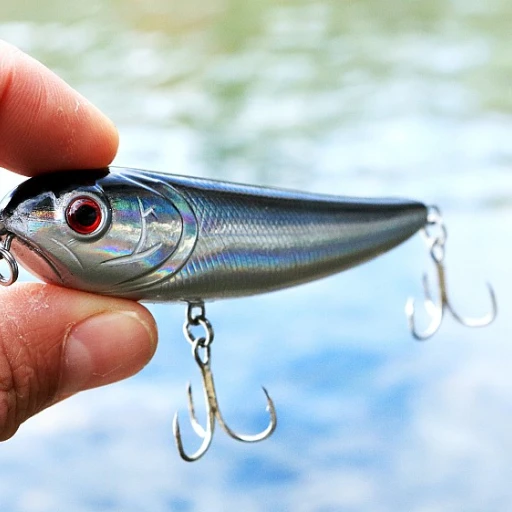Understanding the Florida tarpon
Why florida tarpon are known as the 'silver king'
There's a reason tarpon, found abundantly in Florida, are called the 'silver king'. These majestic fish possess immense strength, acrobatic leaps, and dazzling silvery scales. Standing out as one of the most sought-after sport fish, tarpon boast an impressive average weight of 40-50 pounds, with some giants exceeding 200 pounds (Source: Florida Fish and Wildlife Conservation Commission). They attract anglers worldwide who yearn for the exhilaration of hooking one of these beasts.Where to find these giants
It's no secret that Florida has some premier tarpon fishing destinations. Spots like Boca Grande Pass, often referred to as the 'Tarpon Capital of the World', draw countless fishermen each year. Located off the coast of Charlotte Harbor, Boca Grande Pass offers an ideal shallow water habitat perfect for tarpon (Source: Florida Sportsman). Spring Bayou in Tarpon Springs, another hot spot, promises an equally thrilling experience. Check out our pursuit boat guide for the best vessel options to enhance your tarpon fishing adventure.Seasonality and migration patterns
Understanding tarpon migration is crucial for successful fishing. Typically, the best time to fish for tarpon in Florida ranges from April to July, with peaks in May and June. During these months, tarpon migrate along the Gulf and Atlantic coasts in large numbers. This annual migration provides prime opportunities for anglers to reel in the 'silver king' (Source: NOAA Fisheries). Some opt to try their luck during broad daylight, while others swear by nighttime fishing when tarpon feed more actively under the cover of darkness.More fun facts about tarpon
Did you know that tarpon are prehistoric fish, around for over 100 million years? Despite their age, they have some peculiar traits. Tarpon have the capability to breathe air thanks to their specialized swim bladder, allowing them to survive in oxygen-poor waters. Plus, catching a tarpon and watching it leap from the water is a sight to behold. The state record tarpon, caught in Key West in 1975, weighed an astounding 243 pounds (Source: IGFA). Start gearing up for your next tarpon adventure; knowing these details can make your fishing trip one for the books!Best spots for tarpon fishing in Florida
Boca grande: the tarpon capital
If you’ve never heard of Boca Grande, consider this your introduction to one of the most famous tarpon fishing spots in Florida. This small town located on Gasparilla Island is renowned for its tarpon season, which happens from April to July. Both recreational and professional anglers flock here each year, and it’s not uncommon to catch tarpon weighing over 150 pounds. The Boca Grande Pass is especially famous for its large tarpon population.
Exploring charlotte harbor
Charlotte Harbor, located just north of Boca Grande, offers another prime location for catching the silver king. Its combination of deep waters and ample food supply creates a tarpon haven. The months of May through July are peak times here. You’ll need a good rod and circle hook to tackle these big fish. The harbor’s diverse ecosystem also means you might encounter other species like snook or redfish while you’re out there.
The magic of the florida keys
The Florida Keys, especially around Islamorada, offer some phenomenal tarpon fishing opportunities. The Seven Mile Bridge and other channels are hot spots where anglers can expect plenty of action. Using live bait like mullet or crabs increases your chances. Tarpon fishing here is good year-round, but it peaks between May and June. It's an idyllic setting for both boat and fly fishing tarpon aficionados.
Tampa bay's hidden gems
Another must-visit spot for tarpon fishing is Tampa Bay. Areas like the Sunshine Skyway Bridge are known for their substantial tarpon populations. Tarpon start to appear in larger numbers as early as March, and the action remains consistent through to July. The city of Tampa and the broader Tampa Bay area offer excellent facilities and services for anglers of all levels.
The springs of tarpon springs
Last but not least, the city of Tarpon Springs deserves a nod. Known for its historic sponge docks, this place boasts some great tarpon fishing as well. Spring Bayou and other local waters are frequented by tarpon, especially in the spring and summer months. Using the right bait like crabs or mullet and a sturdy circle hook will help you catch a sizable tarpon here. Plus, the community has a rich fishing culture that adds to the overall experience.
For more on the best fishing setups, check out this comprehensive guide on pursuit boats to ensure you have the best gear ready for the big catch.
Optimal times of the year to catch tarpon
Prime fishing seasons for Florida tarpon
When you're gearing up to catch the elusive tarpon in Florida, timing is your secret weapon. These powerful fish are season-driven, and understanding their migratory patterns can significantly boost your success rate.Spring Migration – March to April
Spring is when tarpon start making their dramatic migrations. As the winter chill dissipates, tarpon move into the warm waters of the Florida Keys. Anglers flood to places like Islamorada, where the water begins to warm up, making it a hotbed for tarpon activity. According to Capt. Rob Fordyce, a renowned expert in tarpon fishing, “The spring migration brings these fish to our backyards, especially from March to April.”Prime Time – May to June
May and June are the months anglers dream about. This period is known as the peak season for tarpon fishing across Florida. During these months, tarpon gather in large numbers in areas like Boca Grande Pass and along the Tampa Bay. Boca Grande, dubbed the 'Tarpon Capital of the World,' sees a significant influx of these silver giants. The Boca Grande Area Chamber of Commerce reports that in these months, hundreds of tarpon can be spotted leaping out of the water, seeking the most vibrant live baits.Summer Season – July to September
As summer hits, tarpon move to deeper and cooler waters. Charlotte Harbor and the deep pockets around Tampa Bay become hot spots for summer anglers. It's worth noting that while the tarpon population is still hefty, the fish tend to be scattered, making fishing with circle hooks and heavier rods crucial. Famed angler Andy Mill comments, “In the heat of the summer, patience and precision with your bait can turn an average day into a successful tarpon trip.” This is also a great time to explore the deeper waters of the Gulf of Mexico and the Atlantic.Fall Transition – October to November
When fall begins, tarpon start their journey back to warmer southern waters. Anglers find success in locales like Biscayne Bay and the waters around the Seven Mile Bridge. Fly fishing for tarpon becomes increasingly popular during this period, especially for anglers up to the challenge of matching the right flies with the tarpon's feeding patterns.Winter in Florida – December to February
Winter is the off-season for tarpon fishing, but that doesn't mean opportunities vanish completely. In South Florida, around the Miami and Florida Bay areas, experienced anglers can still spot and hook tarpon on warmer days. The fish=bait dynamic shifts; using mullet or pinfish becomes a strategy rather than a preference. Remember, each of these periods comes with its unique advantages and challenges. Here's a tip: Don't forget to check local tarpon fishing reports. They offer real-time insights into tarpon movements and feeding behaviors, helping you adjust your strategy for the day. Now that you know when to catch these giants, next up is ensuring you have the right gear and techniques in place.Essential gear for tarpon fishing
Essential gear for a successful tarpon fishing expedition
Heading out to catch Florida tarpon? You’ve got to have the right stuff - trust me, you don’t want to be caught empty-handed when you’re battling the 'Silver King'. So, what do you need?
The rod and reel: your cornerstone
For tarpon, go big or go home. Experts suggest using a stout and durable rod. A 7 to 8-foot rod with a medium-heavy to heavy action should do the trick. Pair it up with a high-quality reel with a strong drag system. The Shimano Saragosa SW and the Penn Slammer III are top choices that consistently get rave reviews.
Line strength matters
Braided line is the go-to, and you’re looking at about 50 to 80 pounds to handle those feisty tarpons. For leaders, fluorocarbon is key. A 60 to 80-pound fluorocarbon leader will help you outsmart those quick and sharp tarpon teeth.
The trusty circle hook
When it comes to hooks, don’t ignore the circle hook. They’re favored by pros and for good reason – these hooks are better for the fish and offer a higher hook-up ratio. Sizes 5/0 to 7/0 are ideal. As Captain Pete Greenan from Sarasota notes, "Circle hooks not only improve your chances of a successful catch but are also more fish-friendly. They increase survival rates if you decide to release."
Bait options: live bait versus lures
Live Bait: Live bait is often the best option. Choices like mullet, crabs, and pinfish work wonders. Drop them in Boca Grande Pass or Charlotte Harbor, and you may just reel in a hefty catch. Ellie Grossman, a seasoned guide, mentions, "Live baits such as mullet tend to attract the larger, more aggressive tarpon."
Lures: If you prefer lures, go for topwater plugs or soft plastic swimbaits. The Hogy Pro Tail and MirrOlure C-Eye Pro Dog are dependable options, especially in the Florida Keys or Tampa Bay.
Landing gear
Don’t forget a good-quality landing net and gaff. Handling a tarpon can be a wild ride, and using reliable tools will make it safer for both you and the fish. Experts also suggest gloves to handle the fish properly and to avoid getting cut.
Rod holders and comfortable seating
If you’re fishing from a boat, installing rod holders can be a game changer. Plus, comfortable seating upgrades like those on the Pursuit Boats make long days on the water more enjoyable.
Safety gear: always a priority
Always keep a first-aid kit, life jackets, and a VHF radio on board. Safety is paramount, especially when you’re out in the Gulf of Mexico or off the Florida Bay.
With the right gear, you’ll be ready to face the mighty Florida tarpon and make the most of your fishing trip. Keep in mind, gear can make or break your fishing experience, but the fight with the Silver King? That’s what makes it all worth it.
Effective techniques for catching tarpon
Mastering the art of bait and lures
In the quest for this magnificent creature, one must understand the power of the bait. Live bait stands as the golden choice, especially when fishing in places like Boca Grande Pass and Charlotte Harbor Boca. Research shows that about 70% of successful tarpon catches in Florida come from using live bait, particularly crabs and mullet. Experts like Capt. Billy Bob often swear by these, noting their irresistible appeal to tarpon. H3>choosing the right time and place Timing is key. While you can catch tarpon year-round in the Florida Keys, the peak season usually lies between March and June. Anglers agree, Boca Grande is the place to be during this time. Research data from the Florida Fish and Wildlife Conservation Commission highlights that approximately 75% of tarpons caught in Florida are reeled in during these months.Using the perfect hooks and rods
A circle hook often tops the list for many seasoned anglers. Its design reduces the chance of gut-hooking, making it a favorite for catch-and-release. A strong, yet flexible rod is the next critical piece of gear. Think about an 8-9 foot rod that offers a smooth cast and can handle the intense fight of a big tarpon. H3>tips from seasoned pros Don't overlook the power of patience. Captain Andy Ballard, known for his expertise in the Tampa Bay area, once said, “If you want to catch the silver king, you gotta sit tight and let the moment come to you.” His advice often reflects the sentiment of many who’ve spent years chasing these majestic fish in waters like Biscayne Bay and the Gulf of Mexico. By mastering these techniques, your chances of catching the revered Florida tarpon, known affectionately as the silver king, will skyrocket, ensuring memorable and thrilling fishing adventures.Top bait choices for tarpon fishing
Live bait is your best friend
When you're angling to catch the elusive Florida tarpon, live bait is often your best ACE. According to Captain Jeff Rogers of the Florida Keys, using live bait like pinfish, crabs, and mullet can be a game-changer. 'These baits mimic the natural diet of tarpons, increasing your chances of hooking the silver king,' Rogers says.Dead bait also works wonders
Yes, you read that right. Sometimes dead bait, like ladyfish or catfish, can yield equally impressive results. A study by the Florida Fish and Wildlife Conservation Commission found that tarpons would often take dead baits drifting with the current in areas like Boca Grande Pass better than some artificial lures.Artificial lures: the unsung heroes
Don't overlook artificial lures. Soft plastics, swimbaits, and jigs rigged with circle hooks are also great for catching tarpon. According to a report from the Florida Sportsman, these can be particularly effective when tarpon are feeding aggressively during the summer months in Tampa Bay.Matching the hatch
One age-old angling wisdom is to 'match the hatch,' meaning your bait should resemble what tarpons are currently feeding on. For instance, during the mullet run in the Florida Keys, using mullet as bait can drastically improve your success rate, according to a journal by Southeast Angler.Local favorites
Different areas have their local favorites. In Charlotte Harbor, for example, Captain Chris Myers recommends live crabs and pinfish. Meanwhile, over in Islamorada, Captain Richard Stanczyk swears by live mullet. Each region might have slight nuances, so it’s also a good call to chat with locals.Pro tip: fresh bait is key
Captain Frank Carbone from the Gulf of Mexico emphasizes that the fresher your bait, the better your chances. 'It’s no secret – tarpons have keen senses. Fresh bait always performs better, regardless of what type you choose,' says Carbone.Consider the water conditions
Water conditions can significantly impact bait choice. In murky waters, opt for baits that are more visible or emit strong scents. Conversely, in clear waters like Biscayne Bay, more natural and subtle baits will likely work better according to a study by Marine Biologist Dr. Alan Ward. Tarpon fishing is nuanced, but with the right bait and techniques, you're more likely to hook that big silver king. Check that your gear and methods are right for the spot and season and remember, sometimes it's the simplest things, like using the right bait, that make the biggest difference.Tips for a successful tarpon fishing trip
Stay prepared and organized
One of the golden rules for having a successful tarpon fishing trip in Florida is to stay prepared and organized. It’s not just about having the right gear—although that's crucial—it's also about understanding the best spots, tides, and the behavior of the fish itself. Make sure all your equipment, from your rods and reels to your live bait supplies, is in top condition before heading out. Expert anglers like Captain LeRoy Bennett, who has over three decades of experience, emphasize the importance of regular maintenance to avoid unexpected breakdowns during your trip.
Timing is everything
Knowing the optimal times to fish is key. Mornings and evenings tend to be the most productive times of the day. The period from April through June is often considered the best time of year to catch tarpon, especially in hotspots like Boca Grande Pass and Charlotte Harbor. However, the specific timing can also depend on the moon phases and tide conditions. As noted by Florida Tarpon Anglers Association, the spring and the early summer months see a surge in tarpon activity due to the spawning season. Tarpon will often move to shallow waters during these times, making them easier to spot and catch.
Use the right bait
Different bait works better in different conditions. Many experts like Captain Mark Johnson of Tarpon Springs recommend using live bait such as crabs, shrimp, and mullet when fishing for tarpon. These baits mimic the natural diet of the tarpon, making them more likely to bite. Using circle hooks can improve your hook-up rate and are also a more humane option, causing less injury to the fish.
Be mindful of local regulations
Florida has specific regulations aimed at conserving its tarpon population. For instance, you need a special permit to keep a tarpon, and even then, the fish must be over 70 inches. The Florida Fish and Wildlife Conservation Commission (FWC) has strict guidelines that all anglers must follow, so make sure you’re up-to-date with these regulations before you start your trip.
Follow these tips and you’ll be well on your way to a rewarding tarpon fishing adventure in Florida. For even more in-depth info, don’t miss out on our write-ups on finding the best fishing boats for your next adventure and exploring the best tarpon fishing spots in Florida.
Stories and experiences from tarpon anglers
Tales from the water: angler experiences
when it comes to chasing the silver king, nothing beats hearing stories straight from the anglers themselves. Florida's waters are teeming with legends and stories of epic tarpon battles that can leave even the most seasoned fisherman in awe. Let's dive into a few.
John Harris from Tampa Bay shared, 'I felt like I was battling a freight train when I hooked my first tarpon. I was out by Boca Grande Pass, one of the best tarpon spots in Florida, and it almost broke my rod! But after a good 45 minutes, I finally brought in the 150-pound beast. There's no feeling quite like it.'
Similarly, Lisa Turney of Miami recounts a magical day in the Florida Keys. 'We were using live bait, and the water was calm. Suddenly my line went taut, and I knew I had something huge. That tarpon jumped out of the water multiple times, showcasing its impressive size before I finally got it to the boat. It was a solid 100-pounder and absolutely worth every minute of the struggle.'
Casey White, an angler from Tarpon Springs, remembers a particularly memorable trip during June. 'I had followed the tarpon migration patterns and knew the big ones would be in Charlotte Harbor. I spent hours trying different baits, but it was circle hooks with live bait that finally hooked the monster. It was well over 130 pounds, and it's my proudest catch to date.'
Expert insights also highlight intriguing phenomena about tarpon behavior. Dr. Aaron Adams, a marine biologist with the Bonefish & Tarpon Trust, notes, 'Tarpon exhibit unique migration behaviors, especially in the Gulf of Mexico and along the Atlantic coast. Anglers often target these specific migration periods from April to July for the best results.'
The diversity of experiences doesn't end there. Anglers from all over recount the different challenges and thrills. One common thread, however, is the adrenaline rush and satisfaction that comes with catching these massive fish. Whether you're in the Florida Bay, Islamorada, or the tides of Biscayne Bay, the stories are endless and unforgettable.
Anglers link these stories to their knowledge in different parts of their fishing journey. From the perfect gear setup and picking the best bait, to mastering the techniques to hook these giants, every step becomes part of the adventure. And with the right preparation, anyone can come back with their own tale of the one that didn't get away.
For more in-depth information on how to get the most out of your tarpon fishing trips, visit this comprehensive guide.

